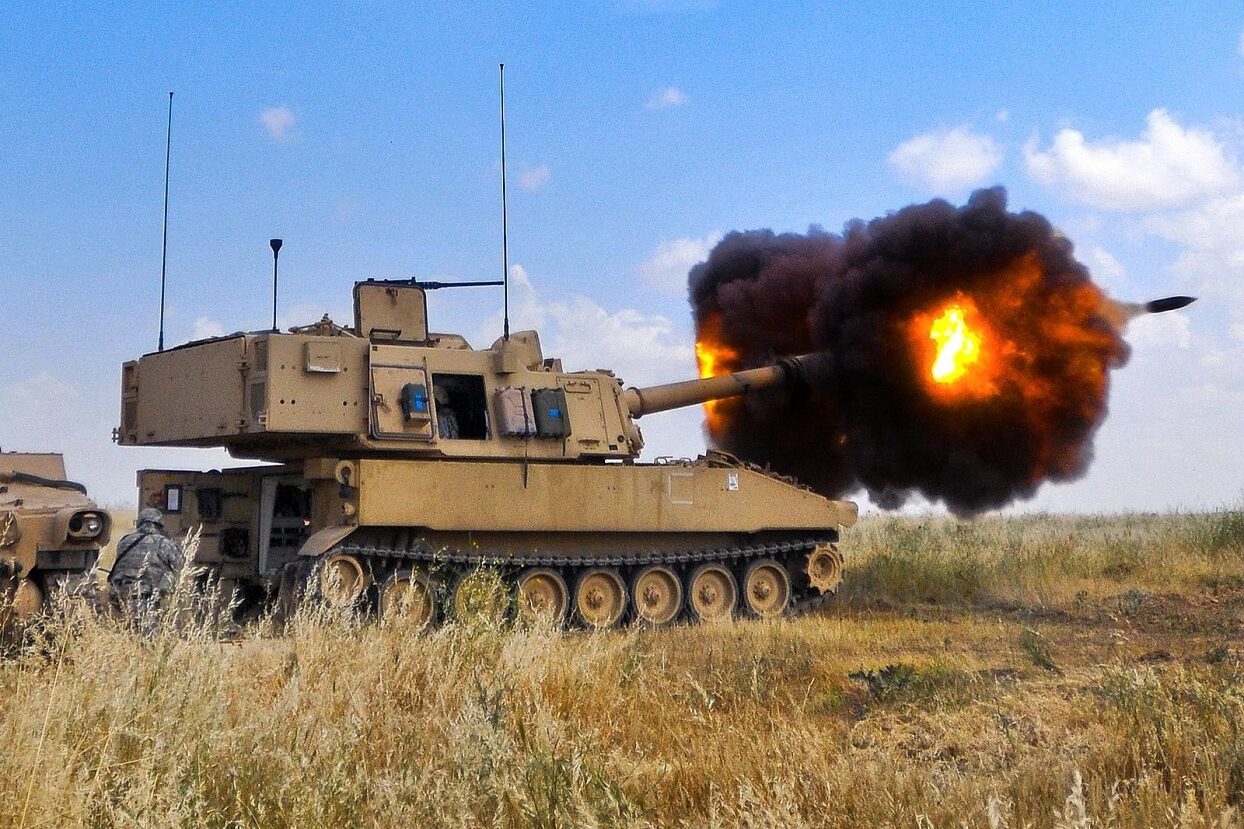Strategic Long-Range Cannon – If the U.S. Army has its way, it will someday get a howitzer that can fire at distances of over 1,000 miles. While it may seem like the army is kidding and many may wonder how it is possible, the army is exploring the possibilities to build its weapon. To put that in perspective, let’s take a look at the Army’s best current howitzer, the self-propelled M109A6 Paladin 155mm gun that can launch an Excalibur GPS-guided projectile. The Paladin’s range is considered ultra-long, but it is only 25-miles, even with the long-range Excalibur shell. How on earth will the Army get a gun to shoot 1,000 miles?
Strategic Long-Range Cannon – What Is This Thing?
It’s called the Strategic Long-Range Cannon (SLRC). The gun looks like it came from World War One. Instead of a train, the gun is mounted on a M1070 Heavy Equipment Transporter System. This is the vehicle that can bring an M1 Abrams tank to the front lines, so the HET is ready for something big. The SLRC certainly qualifies as big. The whole weapon system could be up to 70-feet long.
Just Make a Longer Tube
Usually, a howitzer can lengthen range by extending the barrel and using more powder and the SLRC certainly looks like it has a long barrel, but how do you get to a 1,000 mile range? There is only so much room for powder in the tube.
Use a Ramjet Projectile
One possible answer is ramjet technology. Popular Mechanics’ Kyle Mizokami describes it like this.
“Ramjets are air-breathing engines that use the projectile’s forward motion to shovel air into an intake and then into a combustion chamber, providing a lot of oxygen for fuel and propelling the projectile along at speeds from Mach 3 to Mach 6. Because the ramjet uses available air as fuel, it needs less stored fuel and makes for a smaller overall package,” Mizokami wrote.
Could a Ramjet Projectile Eclipse 1,000 Miles?
It’s not clear if the Strategic Long-Range Cannon is using ramjet shells, but a Norwegian company called Nammo is developing a ramjet-powered 155mm projectile to extend a howitzer’s range to 60-miles. Although that is obviously less than 1,000 miles that the SLRC is striving for it is progress. And the SLRC is likely building on the Excalibur’s precision-guided GPS system to target the beastly gun more accurately.
To be sure, the Army hasn’t tested the Strategic Long-Range Cannon, so the 1,000 mile range may be inflated. But it’s safe to say that the howitzer will someday go longer than existing cannons and that could cement the field artillery branch’s reputation as the king of battle.
Strategic Long-Range Cannon – Can It Be Air-lifted?
One problem with the SLRC is how do you get it to battle in the first place? Yes the HET truck can move it to the area of operations on the ground, but how do you fly it there? Would it fit on a C-17 or C-5? That’s not likely. It just looks too long and heavy.
Strategic Long-Range Cannon – Many Possibilities for That Range
But the 1,000 mile range has many possibilities for use. As Mizokami wrote, “…from southern Germany, the Army could land shells on the outskirts of Moscow. From the Philippines, the Army could pound China’s artificial islands—and the missile sites and airfields on them—to pieces. From Japan, SLRC could hit Beijing itself.”

A M109A6 Paladin howitzer assigned to the Hartwell-based Alpha Battery, 1st Battalion, 214th Field Artillery Regiment, 648th Maneuver Enhancement Brigade, Georgia Army National Guard moves to a loading dock May 10, 2021, in Jacksonville, Florida. The self-propelled howitzer was one of over 200 Georgia Army National Guard vehicles that deployed to Morocco for participation in exercise African Lion 21. (U.S. Army National Guard photo by Capt. Bryant Wine)

Excalibur Round. Image Credit: Creative Commons.
But wait, couldn’t the U.S. military just use a cruise missile or hypersonic missile launched by a bomber, fighter, or submarine? That might be easier. This is why the SLRC could be something that enters into the defense acquisition valley of death without making it past prototype to serial production. What it could accomplish is to get the soldiers who specialize in field artillery uber-excited about their jobs.
Now serving as 1945’s Defense and National Security Editor, Brent M. Eastwood, PhD, is the author of Humans, Machines, and Data: Future Trends in Warfare. He is an Emerging Threats expert and former U.S. Army Infantry officer. You can follow him on Twitter @BMEastwood.

